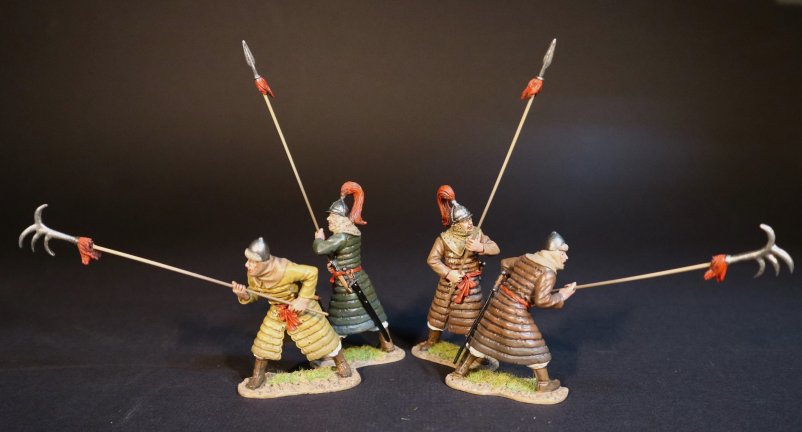MIJ-17N Four Korean Auxiliary Spearmen
$168.00
Description
The main invasion of Japan started at Hakata Bay. All available accounts describe the style of the Invasion forces fighting, leaving the Japanese defenders confused. The unfamiliar tactics in which the Mongol, Chinese and Korean soldiers advanced on foot in large and comparatively dense groups protected by shields, controlled by drums and the accompaniment of much noise, required a major reconsideration of traditional Japanese fighting techniques.
The tradition of selecting a worthy opponent for one’s arrow, needed a major re-think. In a Japanese battle it was the practice to seek out a worthy opponent and fight to the death, but in this battle the Mongols “attacked all together with great vigour.”
The fighting of the first 24 hours of the invasion was fierce, and within little more than a day the Mongols had established a bridgehead. The Mongols advanced as far as Mizuki, (water castle), an earthwork moat fort dating back to 664, and it was here that the fighting reached its climax. The Samurai defenders were under the command of Shoni Kagesuke. He was with two companions when they noticed Liu Fuxiang, a senior Mongol commander, who had come within bow range. Kagesuke took aim and shot the Mongol commander in the face.
It is believed because of the loss of this important leader the Mongol advance was stalled, and a withdrawal began back to the ships.
With this tactical withdrawal the first invasion concluded, because the armies never again left their ships for Japanese soil. Instead, they set sail back to Korea.





